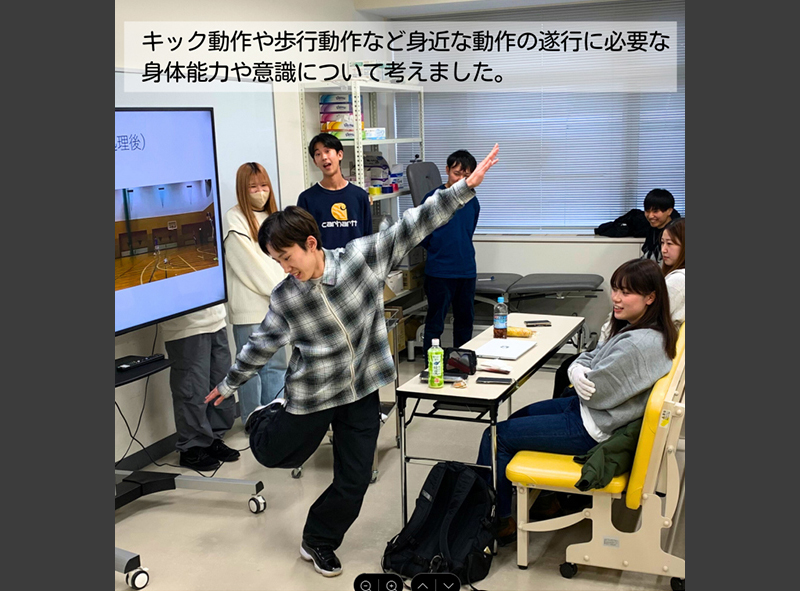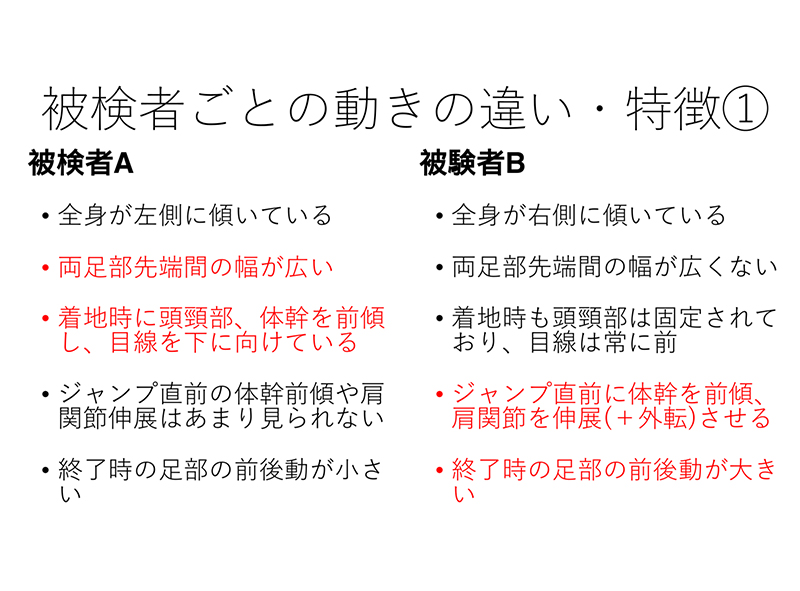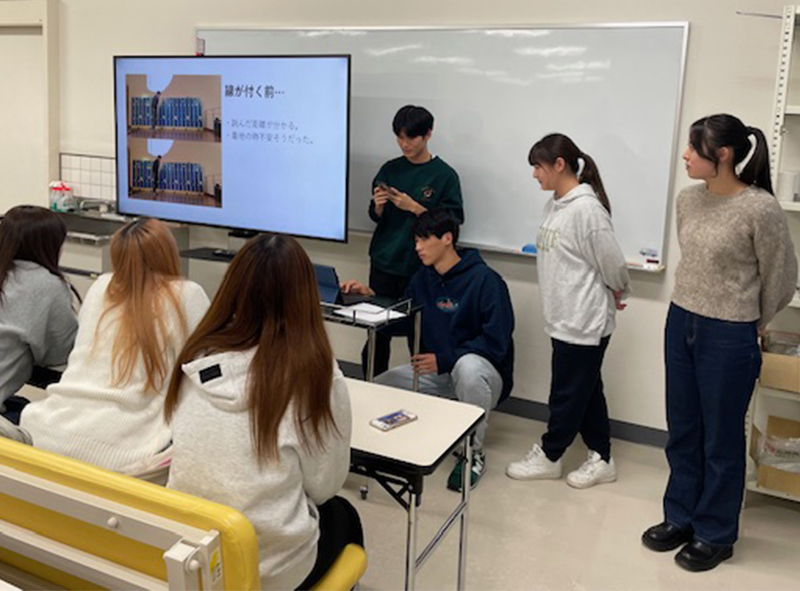Implementation record of SPLYZA Motion in classes. :
Aomori University of Health
and Welfare

Aomori University of Health and Welfare | Dr. Morohashi
■ Challenges Before Introducing SPLYZA Motion
In teaching motion analysis, students frequently expressed that it was "difficult" or "hard to understand."
As educators, we sought a more accessible and engaging method to spark their interest.
■ Reasons for Choosing SPLYZA Motion
The tool does not require complicated operations, allowing analysis through the app simply by recording
videos on a mobile device in any environment. For Gen Z students, the ease of use via smartphone made it an
ideal choice for implementation.

■ Practical Use of SPLYZA Motion
Second-year students in the Physical Therapy Department were divided into groups of four. Each group
selected and recorded two different movements for comparison, then analyzed them using SPLYZA Motion.
During class, students gave presentations using PowerPoint, comparing the analysis of regular video footage
with that of SPLYZA Motion. They highlighted the differences between the two movements as well as variations
among participants.
Finally, students presented ideas on how this analysis could be applied to analyzing patient movements in
clinical practice. A Q&A session with other students followed.
Overall, SPLYZA Motion aligns well with the active learning approach that our institution promotes.

■ Effects After Introducing SPLYZA Motion
Students were able to notice differences in body movement across participants and types of motion. For
beginners like students, the line drawings processed by SPLYZA Motion made analysis easier. Using the
full-body line drawings allowed them to observe not just individual joint movements but the overall body
motion, including peripheral areas that are often overlooked.
Many students shared feedback such as, "It was interesting," "It was fun," and "It made me more interested
in movements." Adding the extra step of processing the footage with SPLYZA Motion seemed to increase their
engagement and curiosity compared to simply analyzing raw video.
Looking ahead, it is anticipated that tools like this will become commonplace for providing feedback to
patients in clinical settings. Experiencing this kind of technology as students is seen as highly valuable
preparation for their future careers.
